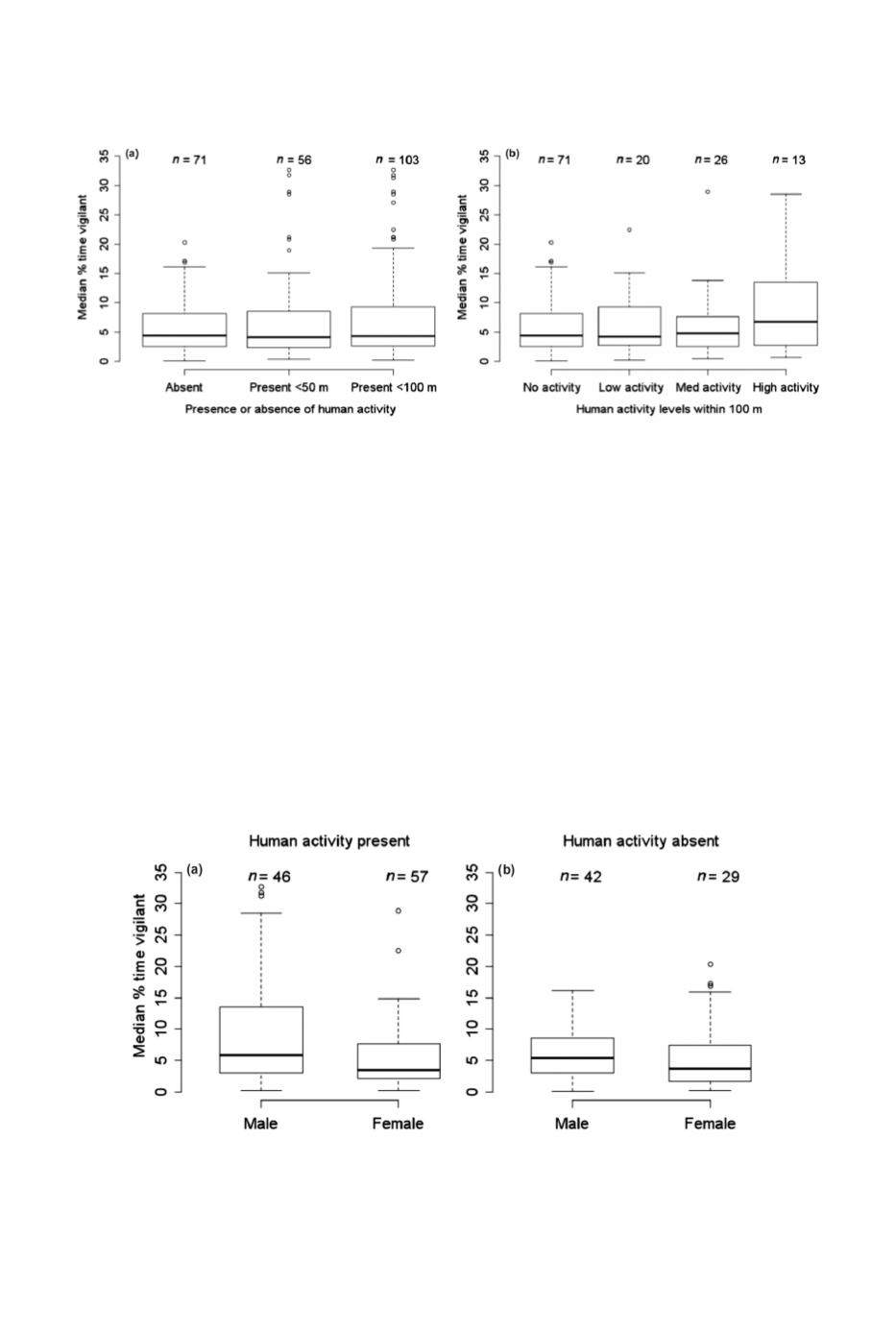
110 Wigeon vigilance on golf courses
©Wildfowl & Wetlands Trust
Wildfowl
(2013) 63: 105–114
similar behaviour in Eurasian Wigeon
Anas penelope
in reaction to experimental
pedestrian disturbance on a wetland
restoration area in Denmark. Although not
directly quantified in this study, this suggests
that American Wigeon flocks are still
somewhat reliant on open water habitat such
as golf course ponds as predator-free refuges
in an urbanised environment, and will use
them to escape from major disturbances.
Interestingly, vigilance levels increased with
larger flock sizes. This contrasts with the
long held supposition that vigilance should
decrease with increasing flock sizes (Inglis &
Lazarus 1981), but may reflect the
correlation (Spearman rank correlation:
r
172
= 0.24,
P
< 0.05) between flock size and
distance from water (
sensu
Mayhew 1987).
Figure 1.
American Wigeon vigilance behaviour (median percentage of time spent vigilant) in relation
to: a) the presence or absence of human activity within 50 m and 100 m of the focal flock, and b)
different levels of human activity within 100 m of the focal flock, while flocks grazed on suburban golf
courses near Fallbrook, California, USA from 28 January – 22 March 2012.
Figure 2.
Difference between male and female American Wigeon vigilance activity (median percentage
of time spent vigilant) in the: a) presence, and b) absence of humans, while flocks grazed on suburban
golf courses near Fallbrook, California, USA from 28 January – 22 March 2012.


